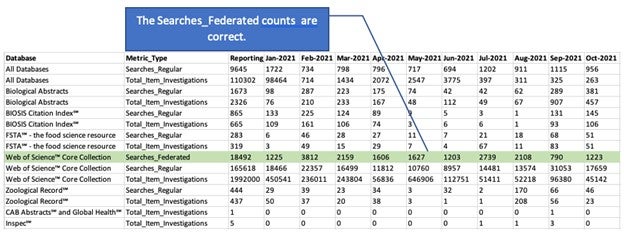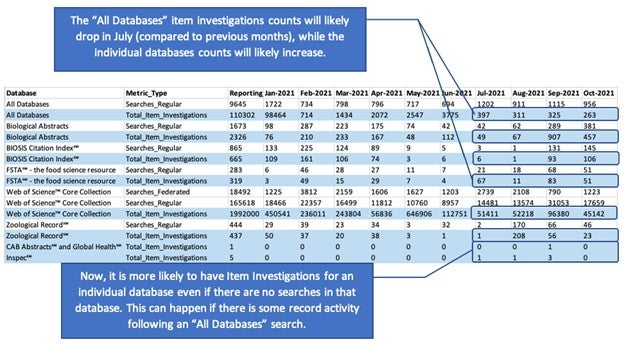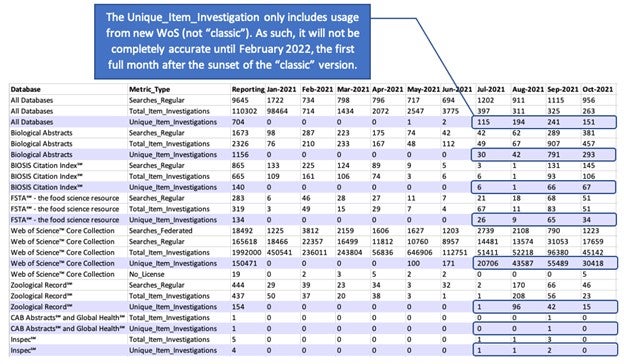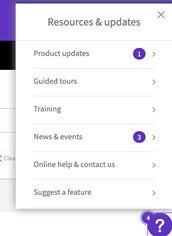New Web of Science is the primary destination
On July 7, 2021, the new version of Web of Science became the primary destination. Since then, we’ve been collecting feedback and updating new Web of Science just about every 2 weeks with new features, fixes to issues, and improvements. The feedback has been overwhelmingly positive. The “classic” version of Web of Science was sunset on January 6, 2022.
What is available in new Web of Science?
We have migrated all core functionality to the new interface. There are a few exceptions to this, such as Email export format, which saw very little use in classic Web of Science. We continue to collect feedback to help drive future enhancements.
All registered users accounts (which contain settings, alerts, and saved marked lists) are available in new Web of Science, so there will be no loss of user’s stored information.
In addition to migrating existing functionality, we have also added new functionality that is only available in the new interface. Some of these improvements include:
- The Web of Science Author Beamplots
- Enriched Cited References
- Share searches
- Persistent Search History
- Export up to 1000 records
- Export in RIS format
- 50% more article-patent links in Derwent Innovation Index
- Redesigned Structure search page in the Web of Science Core Collection
- and more…
Will my users be able to access the new Web of Science if my institution uses a proxy server?
Yes, access to the new Web of Science is granted to users who can currently access existing Web of Science. We recommend that institutions who use EZ Proxy should confirm that they have updated to the most current stanza.
For questions on other proxies, please view the complete information about configuring your proxy server for Web of Science.
Web of Science Usage Reports – update for New Web of Science
How will usage at the new Web of Science be counted?
COUNTER5 Reports
The COUNTER5 reports now include usage data from “new” Web of Science usage (from February 2021 forward) in addition to usage from “classic” Web of Science. Per the COUNTER specification, Web of Science “classic” and “new” Web of Science are considered one platform. As such, metrics for both classic and new Web of Science are rolled into a single set of reports so you can easily obtain your total Web of Science usage from both versions of the product. New Web of Science is compliant with COUNTER5 specification.
Availability of non-COUNTER usage reports for New Web of Science
In WURS, in addition to COUNTER5 reports, we provide COUNTER4 reports and other reports (such as Single Product Reports), but these only list use from “classic” Web of Science. Because COUNTER4 is no longer supported by COUNTER.org, we will be removing this report in 2022. Other reports (such as Single Product Reports) will be selectively updated to include usage from both “classic” and “new” Web of Science. For example, the Single Product Report “Custom Summary Report” was updated on December 9, 2021, to include usage from both “classic” and “new” Web of Science. Refer to the notices within WURS for more information.
Some reports do not need to be updated because they report on usage that is not dependent on the WoS version. The “Article Match Retrieval” and “Web Services Usage” reports continue to be accurate.
Counting usage in New Web of Science and classic Web of Science
The new version of Web of Science (WoS) was released in “beta” for most customers in March 2021. At that time, the “classic” (old) version of WoS was still the default destination for WoS users, and we added a button on the home page to access the new version. Most usage continued in the classic version, with a small percentage of users navigating to try the new version. Up until March, all WURS usage reports (COUNTER and non-COUNTER reports correctly reported usage for classic WoS).
From March through July 7, 2021, most institutions defaulted to viewing the classic version, and we provided a link to navigate to the new version. On July 7 we changed the default version from classic to new WoS for most customers, meaning that when you start a WoS session you start in new WoS (not classic). Classic was still available, however, so users can navigate to it and still perform actions. During this phase, we see roughly 10% of our WoS activity still in classic WoS.
WoS Version Timeline
This table shows the timeline of when the two versions (“classic” and “new”) were available for most customers. Note there were a handful of early-adopter customers who gained access to the new version earlier than March 2021.
| Before March 2021 | March–Jul 7 2021 | Jul 7 2021–Jan 6 2022 | Jan 6 2022*–forward | |
| Version(s) Available | Only Classic. | Both Classic and New. Classic the default. | Both Classic and New. New the default. | Only New. |
| Usage Notes | All usage from Classic. | Most usage from Classic.** | Most usage from New.** | All usage from New. |
* We are planning on sunsetting the classic version of WoS on or about January 6, 2022.
** Between March 2021 and January 6, 2022, both versions of Web of Science were available.
COUNTER5 Metrics Timeline
This table provides information on key COUNTER5 metrics. More information on each of these is provided after the table.
| Before March 2021 | March–Jul 7 2021 | Jul 7 2021–Jan 6 2022 | Jan 6 2022–forward | |
| Searches Regular | Metric valid. Classic activity only. |
Metric valid. Sum of both Classic and New activity. |
Metric valid. Sum of both Classic and New activity. |
Metric valid. All activity from New WoS. |
| Searched Federated | Metric valid. There is no “version” for Web Services; this is accurate. |
Metric valid. There is no “version” for Web Services; this is accurate. |
Metric valid. There is no “version” for Web Services; this is accurate. |
Metric valid. There is no “version” for Web Services; this is accurate. |
| Total Item Investigations | Metric valid. Classic activity only. |
Metric valid. Sum of both Classic and New activity. Most activity from Classic WoS. |
Metric valid. Sum of both Classic and New activity. Most activity from New WoS. |
Metric valid. All activity from New WoS. |
| Unique Item Investigations | Metric not valid. Not calculated for Classic WoS. |
Metric not valid. Not calculated for Classic WoS. |
Metric not valid. Not calculated for Classic WoS, so it will be lower than expected. |
Metric valid. All activity from New WoS, so it will be accurate. |
COUNTER5 METRICS DETAILS
COUNTER5 Searches Regular
Below is a sample of a COUNTER5 DR_D1 report. The “Searches_Regular” metric (in the highlighted rows) in the COUNTER5 reports is calculated in a consistent manner across both versions across the entire timeline, and the counts shown are a sum of search activity from both versions. As such, Searches_Regular can be used for month-to-month and year-to-year usage analysis.

COUNTER5 Searches Federated
Below is a sample of a COUNTER5 DR_D1 report. The “Searches_Federated” metric (in the highlighted row) in the COUNTER5 reports has not changed, since the Web Services are not affected by the product version (there is no “classic” or “new” web services). As such, Searches_Federated can be used for month-to-month and year-to-year usage analysis.

COUNTER5 Total Item Investigations
Below is a sample of a COUNTER5 DR_D1 report. The “Total_Item_Investigations” metric (in the highlighted rows) in the COUNTER5 reports is calculated slightly differently in the new version of WoS. Still, the counts shown are a sum of search activity from both versions. The grand total of “Total_Item_Investigations” across all the databases is not affected, but the distribution of the activity among those databases is changing.
Starting in July, you will likely notice that the “All Databases” item investigations will likely drop while the individual database counts will increase. This is because in new WoS some activity in All Databases is now attributed to the individual databases. More information on this below.

Even though we are counting clicks in new WoS the same as in classic WoS, there is a difference to which database some of those clicks are being attributed. In Classic, when in “All Databases” view, all activity is attributed to “All Databases” even if the activity was performed on a record from one of the individual databases. New WoS allows us to track the activity at a record level and attribute the activity to the specific individual database.
In New WoS, only Searches, Full Record Views, and Export from the summary counts toward “All Databases”, while full record export and all full text clicks are now attributed to the product database (like WoS Core Collection or Medline). We are transitioning toward attributing actions on a database record to the specific product database (rather than All Databases). Of course, the overall total events for the institution will not change, but in the product breakdown it is likely the All Databases counts for Item Investigations will drop while the databases counts (like WoS Core, Medline, etc.) will increase. The goal is to attribute all record-based activity performed in All Databases (except Searches) to the individual databases. We will work on this in 2022.
| All Databases “page” | Function | Classic WoS attributes this usage to: | New WoS attributes this usage to: | Notes |
| Basic Search | Search | “All Databases” | “All Databases” | Searches in All Databases will always be attributed to All Databases. |
| Summary | Full record link | “All Databases” | “All Databases” | |
| Full Record | Next / Previous full record link | “All Databases” | “All Databases” | |
| Summary | Export | “All Databases” | “All Databases” | |
| Summary | View abstract link | “All Databases” | individual databases | Changed from Classic to New. |
| Summary | Full Text buttons | “All Databases” | individual databases | Changed from Classic to New. |
| Full Record | Export | “All Databases” | individual databases | Changed from Classic to New. |
| Full Record | Full Text buttons | “All Databases” | individual databases | Changed from Classic to New. |
COUNTER5 Unique Item Investigations
In general, Total Item Investigations are a count of all record-based activity by all users at your institution. Unique Item Investigations removes duplicated investigations if the same record is acted upon more than once in the same session. For instance, if a user in a session clicks to view a full record and then exports that record, this will count as 2 “Total Item Investigations” but only 1 “Unique Item Investigation.” As such, the “unique” count will always be less than or equal to the “total” count. In our experience, the “unique” count ranges from about 50% to 70% of the “total” count.
Note: On July 7 we changed the default version from classic to new Web of Science for most customers, meaning that when you open a WoS session you start in new WoS (not classic). Classic is still available, however, so users can navigate to it and still perform actions. After July 7, we have seen about 10% of our Web of Science activity is still in classic WoS.
Until we sunset “classic” WoS (scheduled for January 6, 2020) the Unique count not will be accurate. This is because in “classic” WoS we do have the ability to generate the Unique count. This means that none of the record “investigations” in classic will be included in the Unique count. However, all activity in New WoS does generate accurate Unique_Item_Investigation counts. As such, the Unique_Item_Investigation will not be completely accurate until February 2022, the first full month after the sunset of the “classic” version.
Below is a sample of a COUNTER5 DR Master report. The “Unique Item Investigations” metric (in the highlighted rows) in the COUNTER5 reports is only available from New WoS (as described above). As such, Unique_Item_Investigations before July will likely be zero. For the first week of July, most activity was performed in classic WoS, while for last three weeks of July and beyond most usage for most customers was performed in new WoS. As such, July metric Unique Item Investigation count will likely be lower than expected when compared to Total Item Investigations. From August forward, the Unique Item Investigations count will still be low, given that about 10% of all activity is still in WoS classic.
As mentioned above, the Unique_Item_Investigation will not be completely accurate until February 2022, the first full month after the sunset of the “classic” version. Until then, the Unique_Item_Investigation will likely be incorrectly low and should not be used to make any decisions.

COUNTER5 No_License
Below is a sample of a COUNTER5 DR_D2 report. The “No_License” metric is a count of the number of times a user at your institution attempted to access a record to which your institution is not entitled. This is typically a rare occurrence. For instance, it can happen if a user at your institutions is forwarded an alert email with a link to a database, edition, or year that it outside your entitlements. When the user clicks that link in that email then WoS will generate a “No License” error when it attempts to retrieve the record. Between July 7 and October 15, 2022, this error was not logged correctly in New WoS, so the counts from July to October could be lower than actual.
![]()
SUSHI API
The new Web of Science version was added to the SUSHI API. All Web of Science usage (from both the classic and new versions) have been combined a single set of COUNTER5 reports. As such, administrators will not need to change any of their current processes to obtain all their Web of Science usage.
Session Counts in non-COUNTER reports
Our existing WURS reports for Web of Science classic will report a combined number of total sessions for both Web of Science classic and the new Web of Science. Sessions are deduplicated; there is no double counting if a user uses both platforms at the same time. Dual access should not have any impact on session statistics.
COUNTER5 Audit for new Web of Science
Our COUNTER5 reports are now fully COUNTER compliant. This means that all of our data capture, processing, and reporting for the COUNTER5 reports have passed all tests performed by a third-party auditor. The COUNTER5-related events from New Web of Science are correct. It is important to note that while we officially passed the audit in February 2022, the metrics presented in the COUNTER5 reports for New Web of Science are accurate (with the exception of “Unique Item Investigations” before January 6, 2022 as noted above; this metric will be accurate for most customers now that Classic has been sunset).
How can I provide feedback?
 In the bottom right-hand corner of every page, you will see a purple question mark that opens the Resource Center. Simply select “Suggest a feature” and you will have an opportunity to provide feedback.
In the bottom right-hand corner of every page, you will see a purple question mark that opens the Resource Center. Simply select “Suggest a feature” and you will have an opportunity to provide feedback.